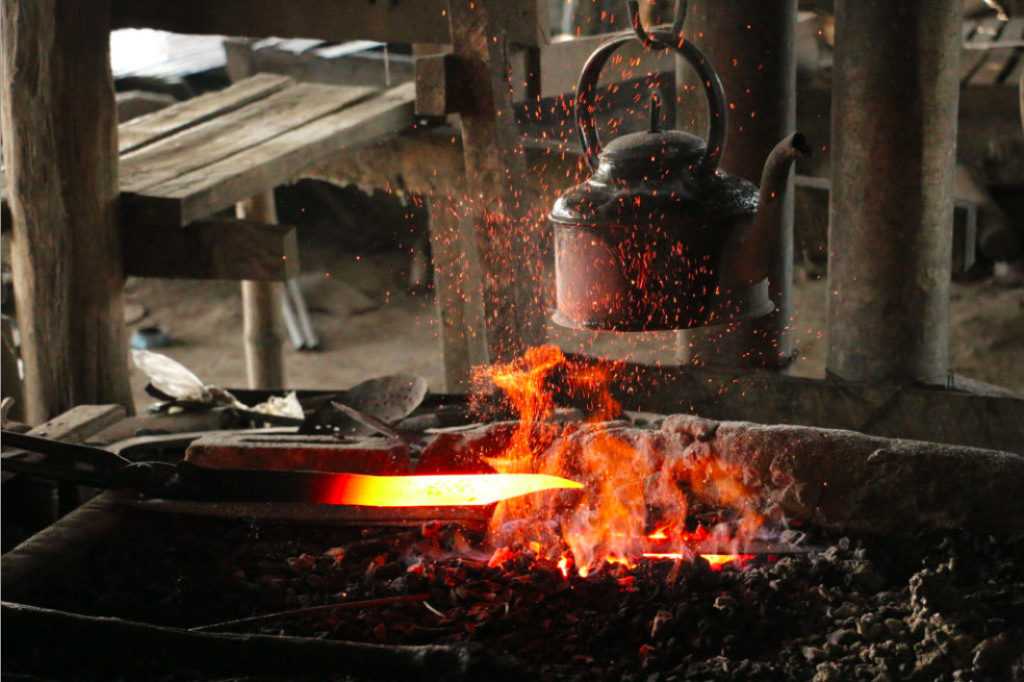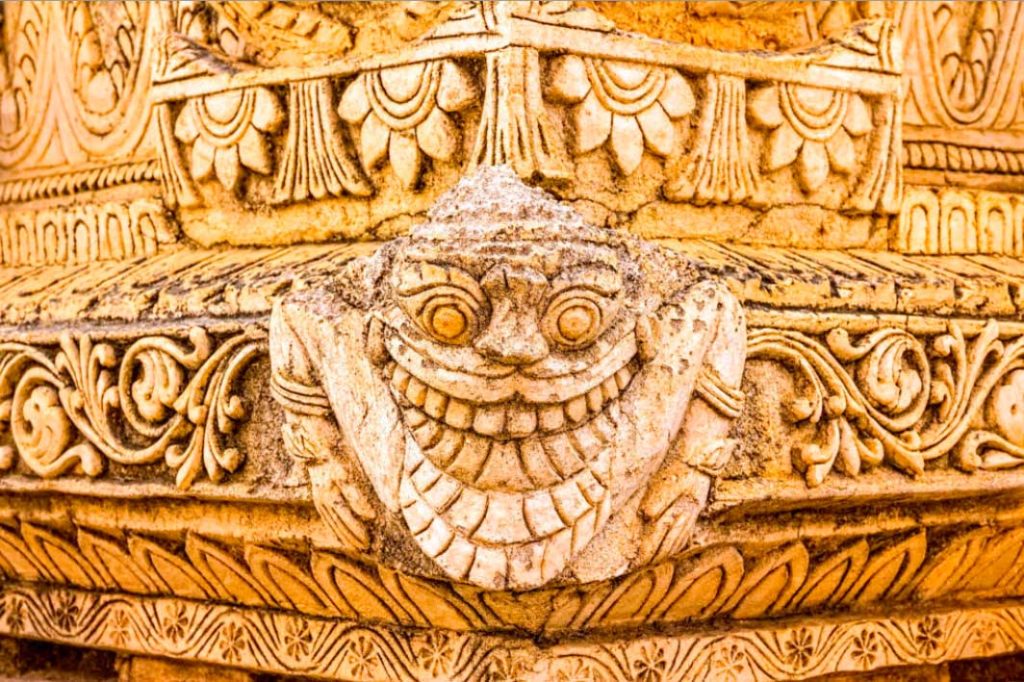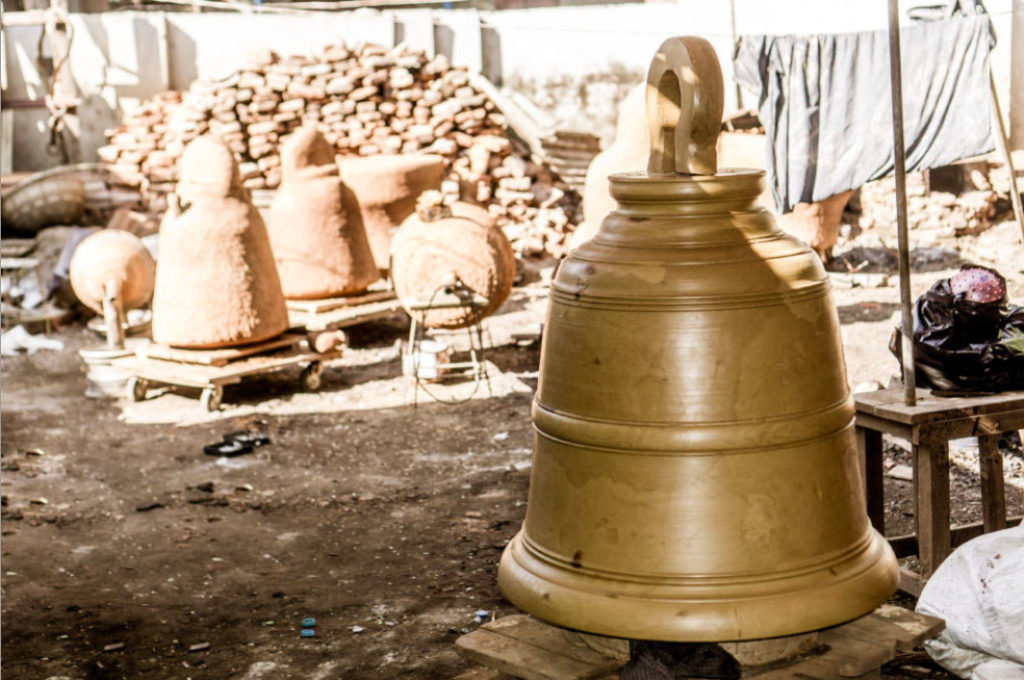- Blacksmith (ပန္းပဲ ba-bè): The traditional art of iron forging, where artisans create products ranging from ox-cart axles to everyday items.

From the era of Bagan onwards, the crucial process of heat-treating iron or steel in furnaces has been essential for manufacturing various goods and tools. Known as Panbe in the local context, skilled blacksmiths shape iron ox cart axles, weapons, armor, pickaxes, nails, and other practical items. Employing a distinctive set of tools, these craftsmen skillfully manipulate, hammer, and shape materials, creating highly coveted equipment for woodworkers, soldiers, and farmers. - Woodcarving (ပန္းပု ba-bu): The art of carving on wood, typically using teak, a valuable type of wood.

During ancient times in Myanmar, palaces and temples were adorned with intricately detailed wooden carvings. Nowadays, locating well-preserved older carvings is challenging, as many have succumbed to the ravages of insects, fire, and decay. Fortunately, the tradition of Punpu endures. Crafted from resilient teak wood, Myanmar’s wood carving industry has evolved from its exclusive presence in temples to widespread availability in shopping centers and art galleries throughout the country. - Goldsmith (ပန္းထိမ္ ba-dein): The art of making gold jewelry.

In Myanmar, the craftsmanship of working with gold and silver is known as Pantain. Historically, silver was employed in crafting precious drinking bowls, cups, and shields, whereas gold was predominantly utilized for creating earrings and other forms of jewelry. Artisans engaged in Pantain must possess considerable skill, as the metals undergo a series of intricate stages, including soldering, casting, filing, and forging, to bring forth the final exquisite pieces. - Stucco Relief (ပန္းတော့ pan-daw): The art of creating raised images on a surface using plaster.

Pantuat is the skilled art of crafting ornate floral patterns, lions, and dragons using stucco. Originating prior to the Bagan period, this craft has evolved and refined over time. Pantuat designs intricately embellish the walls of temples and palaces, showcasing highly detailed and intricate decorations that stand as a source of pride in Myanmar’s architectural heritage. - Masonry (ပန္းရန္ pa-yan): Traditional construction art, including building houses, temples, and bridges.

Panyan is the intricate art of building structures using brick, stone, and cement. Employing age-old techniques and tools, Myanmar masons have erected magnificent monuments, stupas, and pagodas. Their craftsmanship continues to captivate people worldwide, as these structures stand as enduring wonders. Among the ten flowers of traditional Myanmar art, Panyan holds a preeminent position, standing proudly amidst the vibrant landscape of Myanmar. - Stone carving (ပန္းတမော့ pan-ta-maw): The art of carving on stone.

Pantamault is the enduring art of stone carving that remains actively practiced today. Skilled artisans in this craft produce a diverse array of sculptures, including statues, animals, flag poles, and pillars. The process commences with the selection of an auspicious day, and after blessing the stone with holy water, the master sculptor, accompanied by their adept apprentices, meticulously carves away at the marble until the slab of rock transforms into its divinely intended shape. - Turnery (ပန္းပွတ် panbut): The traditional art of woodturning.

Myanmar has embraced the art of Panpoot, or woodturning, since the 8th century. Artisans utilize a turning lathe to skillfully create a variety of exquisite wooden items, including boxes, bowls, tables, and chairs, featuring intricate designs and shapes. The roots of this art are believed to trace back to the influence of South Indian culture, particularly during the Bagan period. - Painting (ပန္းချီ bagyi): The traditional art of painting.

Panchi stands as Myanmar’s traditional painting style, originating in the Bagan region. This artistic form captures scenes of people, animals, objects, and landscapes with a palette of rich, vibrant colors. In its early stages, Panchi primarily portrayed religious narratives and mythology. By the 17th century, Western influences, including perspectives and tonal techniques, began to make their mark. Over time, Panchi has undergone further evolution, with contemporary artists pushing the boundaries into the realms of abstraction and avant-garde expressions. - Lacquerware (ပန္းယွန်း panyun): A unique art form with richly colored layers of lacquer.

Panyun is the craft of crafting articles like alms bowls, vessels, and cigar boxes using materials such as wood, bamboo, and lacquer. Myanmar’s tradition of lacquerware has its roots in the Bagan period dating back to the 11th century. The art of Panyun entails the gradual application of resin and clay over woven bamboo frameworks. Intricate designs are then etched onto the object and filled with green pigment or embellished with the addition of gold leaf, creating visually captivating lacquerware items. - Bronze casting (ပန္းတဉ်း badin): The art of casting bronze, where artisans create artistic works from bronze.

The longstanding tradition of bronze casting, known as Pantin, has been an integral part of Myanmar’s cultural heritage for centuries. This intricate process involves the use of a lost-wax method. The initial sculpture is meticulously crafted from clay, coated with wax, and encased in an outer mold made of clay. The artist then inverts the cast, melting away the wax. The final step involves pouring molten bronze into the void left by the melted wax, resulting in the creation of the desired image. Bronze casting is employed to produce a diverse range of objects, including ornate statues found in pagodas, bells, and various cooking utensils.
These arts not only reflect the creativity and talent of the people of Myanmar, but are also an integral part of their cultural heritage. These arts continue to be passed down from generation to generation, contributing to the richness of Myanmar’s unique culture.









![[HONORARY DOCTORATE OF RECORD FOR PRACTICE AND EMPIRICAL RESULTS – 2017] LY THI MAI (HO CHI MINH CITY, VIETNAM)](https://aseanrecords.world/wp-content/uploads/2024/04/0_16-27_jpg_751-218x150.jpg)




